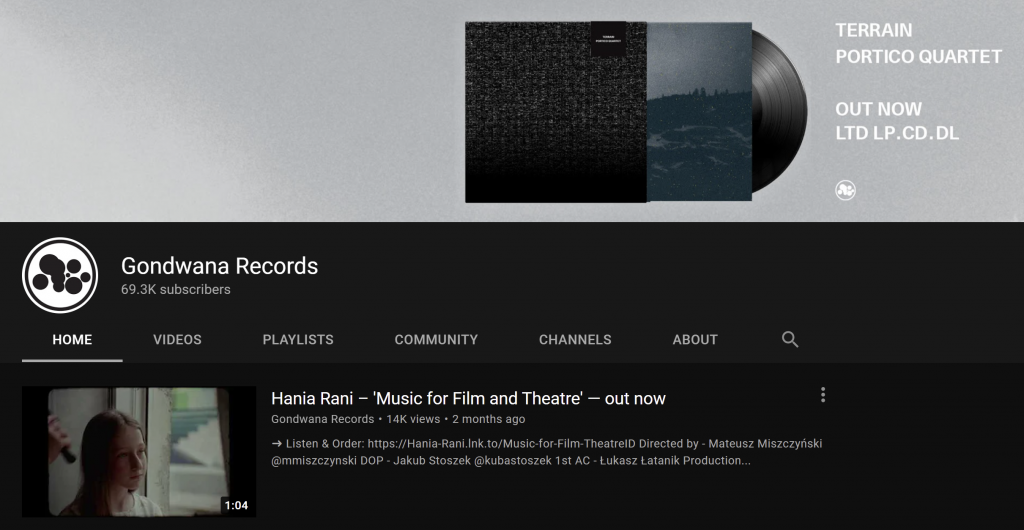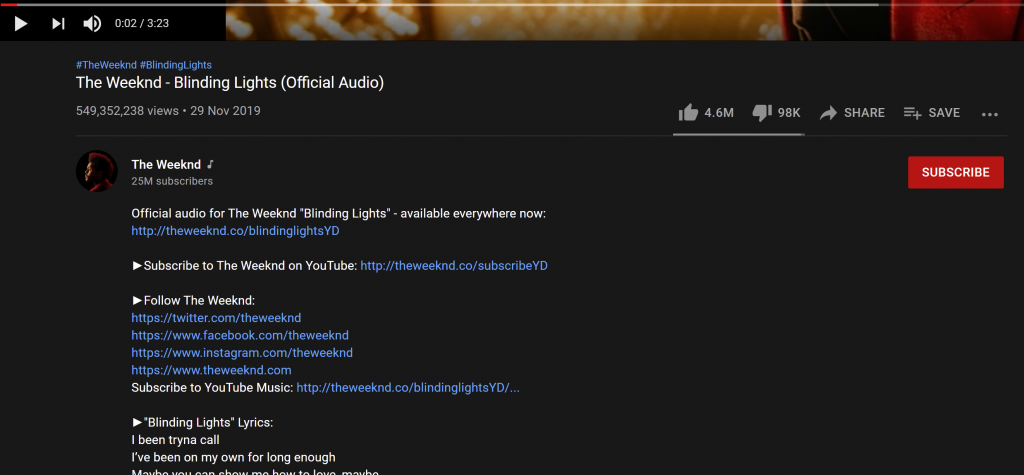
Introduction
With over 2 billion logged-in monthly users, YouTube is one of the most important online video sharing and social media platforms. The platform is a key part of the music marketing ecosystem – but it is often overlooked in label marketing strategies.
So you think, why should I put more time into my label/artist(s) YouTube channel? Well, YouTube is the world’s second largest search engine, meaning that optimising your YouTube channel can vastly improve your SEO and brand presence on the site – making your content more available for your existing and potential audiences.
This article is going to show you the basic steps you should be implementing on your label’s / artists’ YouTube channels.
1. Official Artist Channel

First thing’s first, you should apply for your artist channels to be upgraded to an Official Artist Channel (OAC). This is important for the following reasons:
- It rationalises multiple artist pages (e.g. artist-owned channel, VEVO channel and YouTube Music artist profile) into a single destination, combining all the subscribers into a single pool across YouTube and YouTube Music
- It brings all of the artist’s premium content into the same place for fans to discover
> All official videos (even those uploaded to a label channels etc.) are automatically featured on the relevant OAC
> Audio singles/albums from YouTube Music are integrated into the channel page. - The music note logo increases credibility
- Improves SEO and adds a side panel in search
- Access to YouTube studio features: profile, concerts, YouTube analytics across multiple channels etc.
You can find more information about claiming YouTube OACs here.
2. Customise Your Channel

Here are four basic actions you can take right now to optimise your YouTube profile:
- Feature your latest / most important video
- Include a cover photo with relevant artwork for your latest release (you should update your header and profile photo every time you want to promote a new single / album – keeping it up to date with current branding)
- Add social media links to your profile (Facebook, Twitter, Instagram, TikTok etc.)
- Separate your videos into playlists
If you’re looking for inspiration on best practises, I always think it’s best to look at what the chart topping artists are doing – as they have cutting edge marketing teams running their channels e.g Billie Eilish.
3. Optimise Your Videos
When uploading a video / looking going back through your old videos, it is very important to look at the following…
Video Title
Include relevant keywords (correctly formatted artist name + track name when appropriate), keep to 50-70 characters and include the type of video (Official Music Video, Official Audio, Lyric Video, Live at…)
Example: Kudos Artist – Kudos Song (Official Music Video)
Video Description
- Should be used to make people excited about the video
- Keywords are still important (include artist + track name, album name)
- Include a short narrative to give viewers more insights
- Prioritise important information
- Include Links to release landing pages & artist/label socials (e.g kudl.li, linkfire, linktree)
- Include Lyrics – important for SEO
- Include three #hashtag (tags included anywhere in the description also show above the video title)
- Include contributor credits (e.g. Director, Producer)
A good example of a video description that includes the majority of the above is The Weekend – Blinding Lights

Thumbnails, Tags, Cards and End Screens
Include Thumbnails, Tags and/or Cards and End Screens on all of your YouTube videos.
These features are designed to keep people on your channel by cross-promoting your other videos. Cards can also be used to add external links and because they work equally well across desktop and mobile, they are the most effective way to provide relevant download or physical products buy links.

Playlists
Remember to add your video to one or more relevant playlists – to group together live videos, behind the scenes footage etc. Playlists encourage viewers to watch several of your videos in succession – increasing the average watch-time which builds recommendations generates more revenue. You can feature videos from any channel in your playlists as well so they can be used to good effect on label channels to make a playlist for each artist on the roster.
Be Social
Be social (Use comments to interact with audience)
Once the video has been uploaded, remember to be social in the comments section! Reply to your audience, thank them for their comments, start discussions.
4. Keep it Tidy
Make sure your channel is focussed on the thing that it is there to represent – your label or your artist – and don’t allow it to become cluttered with old or irrelevant videos which might distract from what your fans and followers really want to see.
Un-list or delete any videos that are not directly relevant.
Do you need to keep promos for past events and releases? Are there videos that you uploaded just to embed on another site or share with someone else but that don’t need to be publicly available on your channel page? Have you uploaded any personal videos to the channel that are appropriate for your professional persona?
Note that unlisted videos can still feature in public playlists – so you can still have an Old Promo Videos playlist available on your page without the individual videos appearing on the videos tab or in search results.
Delete anything that you do not 100% own unless you have cleared the rights.
This is a big one! YouTube has the most advanced content recognition system in the world. If you use someone else’s video or music in your uploads, they will know about it sooner or later. If the rightsowner so chooses, your video can be instantly removed from YouTube, giving your channel a “copyright strike”. That’s bad news. If you get three strikes you will lose your channel.

Go through your old videos. Some of them may have copyright claims on them already (this is not a strike, it just means that third-party content has been recognised). You may see claims from [Merlin] Kudos Records where you’ve used your own music – you don’t need to worry about those. But if you have claims by rightsowners that you don’t recognise, those may be risky. Consider deleting (not just un-listing) the video or appealing the claim (but only if you have genuine grounds to do so). Also check videos that don’t have claims (yet) and delete any that may be at risk of causing problems in the future, particularly if they’re not currently adding much value to your channel.
5. New Release Strategy
Now your channel is in good shape you should start to think about how you can include YouTube as part of your release strategy. You can checkout YouTube’s New Release Strategy Checklist here;
And that’s a wrap! If you have any questions on how to optimise your YouTube channel, or are ready to start putting some money into YouTube / Social Media advertising, email beth@kudosrecords.co.uk